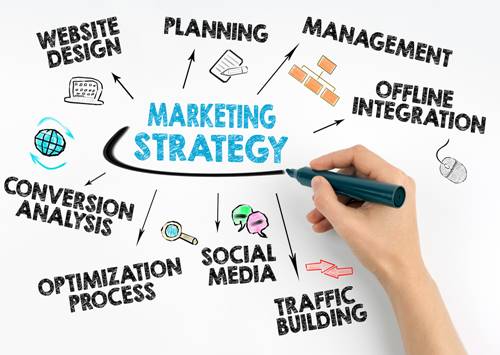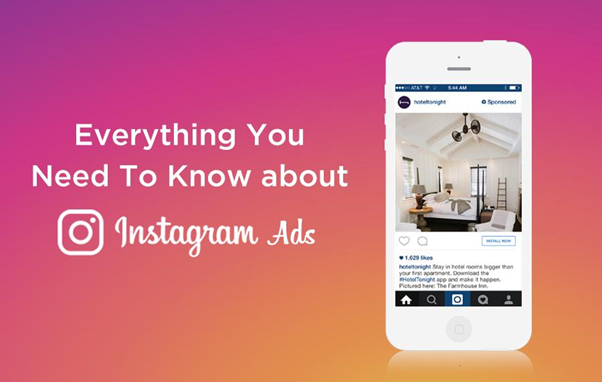How to Create an Effective Content Marketing Strategy
When done correctly, blogging and content marketing can boost your company’s brand and increase sales far beyond what is possible through traditional outbound marketing.
However, there are common misconceptions around what a content marketing strategy should look like and what it can mean for your business.
As a business owner, you should consider your content marketing strategy to be the map that leads to more customers and higher revenues.
A well thought-out and effective content marketing strategy will guide you in meeting the unique goals of your business and help potential customers find your products or services and see you as the best solution to their individual needs.
One of the strongest tools available in a content marketing strategy is blogging. This post will detail the key elements of a content marketing strategy, why you need one, and how regular blogging can help you meet your business goals.
Content Marketing and Blogging
Content marketing plays an important role in a digital marketing strategy, but as a business owner, how can your business use a company blog to generate more website traffic, leads, sales, and results?
Contrary to what most marketers may think, content marketing is not simply about starting a business blog:
Content marketing is the creation and sharing of high-quality online content, typically using text, images, and videos in order to promote general interest in products, services, and/or a brand. Content marketing is considered to be a strategy for inbound marketing and a tactic used by marketers to drive traffic towards a specific brand. This differs from outbound marketing which puts the brand in front of potential consumers.
You can think of content marketing as a type of passive marketing. A good content marketing strategy will identify a niche area that the brand can address and then drive traffic towards their solution by frequently posting informative, relevant, or engaging content.
Blogging without strategy is like sprinting a marathon.
In general, there are three major ways that businesses can leverage blog content: by blogging for lead generation, blogging for thought leadership, and blogging for brand awareness.
In the end, the content strategy will be specific for the blogging goal since each goal will require its own content type, recommended blogging frequency, and avenue(s) for promotion.
Why All Brands (Big and Small) Should Be Investing in Content Marketing
Some of the biggest value in content marketing comes from the soft sell.
Instead of being subjected to an explicit sales pitch, viewers of blog content will be educated about a particular topic or issue and, if done properly, start to see the source as an expert resource.
The content is (or should be) unbiased and generally informative to the reader or viewer. It’s as if the brand has no investment in the content and simply wants to help people to understand a particular issue or item.
Once a visitor trusts the brand as an authority, they are more likely to purchase from them when the time is right.
To provide content that genuinely interests the target audience and grows the brand, the brand must do several things:
- Provide generally useful content: Informative content means first educating a viewer on something that can be applied to their everyday life. This is typically content that the viewer was previously unaware of or was seeking the answer to. They can then take this information and apply it to their life.
- Generate organic traffic: If the blog traffic comes through search engines, other blog posts, or shares, it is considered organic. Once the viewer is on that page, they become aware of the brand. This might spark interest in the viewer and help them to remember the brand when that product or service is relevant to the viewer and the viewer is looking to make a purchase.
- Build brand awareness: If the article is appealing to the reader, it might encourage them to remember the company name and what they do. This might encourage the reader to refer back to the website at a later date. This might also be a way for the viewer to pass along company information. If the article was well written, they may pass it on to a friend who is also interested in the information provided. This is how a brand becomes a topical authority and a thought leader, further increasing brand awareness.
Elements That Every Good Content Strategy Needs
Your content marketing strategy will identify the goal(s) of the content, the audience(s) that the content is intended for, and the expected outcome(s).
Once the goals and desired outcomes are established, the following questions can then be addressed:
- Who is the target audience for this campaign?
- How can I help my target audience?
- What type of blog content would make sense for my goals?
- How often should I blog?
- What is the ideal blog length for my goals?
- Should I be outsourcing my content creation?
Since each strategy will look different, the answers to these questions should help your company to derive methods that work best for the brand and goal.
So, let’s look at an example.
EXAMPLE BRAND: A home living and furniture store
GOAL: Drive organic traffic through the blog and to the store’s ecommerce page
DESIRED OUTCOMES: Increase sales and bring brand awareness up by 17% after 6 months of blogging (based on polling)
If a brand is interested in generating organic traffic to an ecommerce site, they must first identify the audience:
- Who is the target audience for this campaign? Right now, the audience may be young adults, ages 18 to 35, who are looking to purchase affordable new furniture for their college apartment or first home. Ideally, these young adults will be taking advantage of the brand’s current marketing campaign, buying sophisticated home living items on a budget.
- How can I help my target audience? If your target audience is first-time homeowners and college students, they will need to know the basics about what a living space needs. They also need to see that the particular lifestyle that they find aspirational and aesthetically appealing is affordable with the right planning and design.
- What type of blog content would make sense for my goals? Based on the previous answer, the content should be written in plain English for a crowd who is younger, a bit more casual, and for those interested in trends for living spaces. Your readers might be interested in budgeting for living spaces, life hacks for living spaces or house maintenance, fabric types, taking care of certain furniture and fabrics, the benefits of certain space designs, putting together a color palette, among others. Make sure each new blog post has quality content that the reader can benefit from.
- How often should I blog? There is a lot that can be said about the current topic choices, so you have enough content to blog five times a week. But, given the busy lifestyle of young adults’, they might not read your blog every day and five times a week might be too much for the business to handle. Consider a posting frequency of three times a week so that it lands in their social media feed enough to be seen but not so much that it becomes a nuisance.
- What is the ideal blog length for my goals? In short, a blog should be long enough to complete the purpose of the article. A longer post might not be read all the way through. In this example, the company should aim for 1100 words. Keep the writing style concise, but allow for colloquialisms.
- Should I be outsourcing my content creation? Most likely, yes. The brand in our example is small-to-medium, so three blogs per week might be too much to manage, especially since this includes research, editing, posting, and promoting the content. Outsourcing blog creation will alleviate the writing aspect, but the business will still need to coordinate the blogging and posting schedule, engage with followers on social media, engage with leads, and complete normal operations. The entire content strategy and management can be outsourced as well, meaning that in time, increasing blog frequency or topic depth is possible.
What Does a Successful Blog Look Like?
If this is your first time developing a blogging strategy and implementing it, it can seem daunting to take that first step and begin publishing blog articles.
But do it! Rip off the Band-Aid! Take the leap!
Business blogging should not be that scary. As a business, your corporate blogs are going to be far more unique than the typical content put out by a successful blogger or what you will find in someone’s personal blog. Your goals are vastly different from theirs. Instead, be confident knowing that your brand has useful information and people really do want to learn about that information.
A successful blog is one that:
- Knows that it doesn’t know everything: Cite your sources and stay modest.
- Is regular: Keep your blog updated. Establish a publishing frequency that your social media followers and blog followers can look forward to.
- Is tidy on the backend: A successful blog will have high-quality content on the front end, but will have its SEO strategy in place on the back end to help obtain a rank high on search engine results pages (SERPs).
- Should be shared with social sites: Once a blog is posted, it should be immediately shared to social sites like Facebook, Twitter, and LinkedIn. Blogs should be written in a format that can be easily included in email marketing, social media marketing, and influencer marketing campaigns.
- Is just great content: According to Google, search engines look at content that makes sense. Don’t write keyword-infused gibberish. It should be readable, informative, and relevant to the brand.
- Is custom content: No cheating! Your blog content does not necessarily need to be new information but it should absolutely be original writing and with all external sources cited.
- Maybe features a guest blog: Sometimes a guest post can mix it up and keep your page fresh. Don’t hesitate to bring on a guest blog, especially if the guest blogger can increase the number of quality posts and provide a different, relevant perspective.
- Is enjoyable: A successful blog should be easy to read and, while it should be emotive, it should not make people feel bad about themselves.
- Is engaging: Fresh content will mean that potential customers and readers are more likely to enjoy your content more often. Don’t repurpose content that isn’t yours and don’t repeat your own content too often.
- Cares about strategy: Establish a content calendar so that blog post frequency is consistent.
How to Create an Effective Content Marketing Strategy
Your content marketing strategy should define how you will be getting the right content to the right audience at the right time.
Consistent or regular blogging in line with a developed strategy is a surefire way to meet the specific needs of your audience, industry, and business.
These actions can grow your brand, increase your authority, and lead to a greater conversion rate with higher sales numbers.







